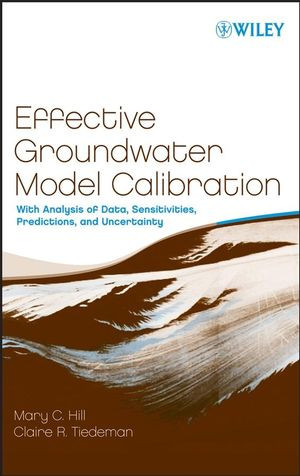

Most ebook files are in PDF format, so you can easily read them using various software such as Foxit Reader or directly on the Google Chrome browser.
Some ebook files are released by publishers in other formats such as .awz, .mobi, .epub, .fb2, etc. You may need to install specific software to read these formats on mobile/PC, such as Calibre.
Please read the tutorial at this link: https://ebookbell.com/faq
We offer FREE conversion to the popular formats you request; however, this may take some time. Therefore, right after payment, please email us, and we will try to provide the service as quickly as possible.
For some exceptional file formats or broken links (if any), please refrain from opening any disputes. Instead, email us first, and we will try to assist within a maximum of 6 hours.
EbookBell Team

4.3
38 reviewsTurn to Effective Groundwater Model Calibration for a set of methods and guidelines that can help produce more accurate and transparent mathematical models. The models can represent groundwater flow and transport and other natural and engineered systems. Use this book and its extensive exercises to learn methods to fully exploit the data on hand, maximize the model's potential, and troubleshoot any problems that arise. Use the methods to perform:
Most of the methods are based on linear and nonlinear regression theory.
Fourteen guidelines show the reader how to use the methods advantageously in practical situations.
Exercises focus on a groundwater flow system and management problem, enabling readers to apply all the methods presented in the text. The exercises can be completed using the material provided in the book, or as hands-on computer exercises using instructions and files available on the text's accompanying Web site.
Throughout the book, the authors stress the need for valid statistical concepts and easily understood presentation methods required to achieve well-tested, transparent models. Most of the examples and all of the exercises focus on simulating groundwater systems; other examples come from surface-water hydrology and geophysics.
The methods and guidelines in the text are broadly applicable and can be used by students, researchers, and engineers to simulate many kinds systems.Content:
Chapter 1 Introduction (pages 1–17):
Chapter 2 Computer Software and Groundwater Management Problem used in the Exercises (pages 18–25):
Chapter 3 Comparing Observed and Simulated Values using Objective Functions (pages 26–40):
Chapter 4 Determining the Information that Observations Provide on Parameter Values using Fit?Independent Statistics (pages 41–66):
Chapter 5 Estimating Parameter Values (pages 67–92):
Chapter 6 Evaluating Model Fit (pages 93–123):
Chapter 7 Evaluating Estimated Parameter Values and Parameter Uncertainty (pages 124–157):
Chapter 8 Evaluating Model Predictions, Data Needs, and Prediction Uncertainty (pages 158–212):
Chapter 9 Calibrating Transient and Transport Models and Recalibrating Existing Models (pages 213–259):
Chapter 10 Guidelines for Effective Modeling (pages 260–267):
Chapter 11 Guidelines 1 through 8—Model Development (pages 268–314):
Chapter 12 Guidelines 9 and 10—Model Testing (pages 315–328):
Chapter 13 Guidelines 11 and 12—Potential New Data (pages 329–336):
Chapter 14 Guidelines 13 and 14—Prediction Uncertainty (pages 337–344):
Chapter 15 Using and Testing the Methods and Guidelines (pages 345–373):